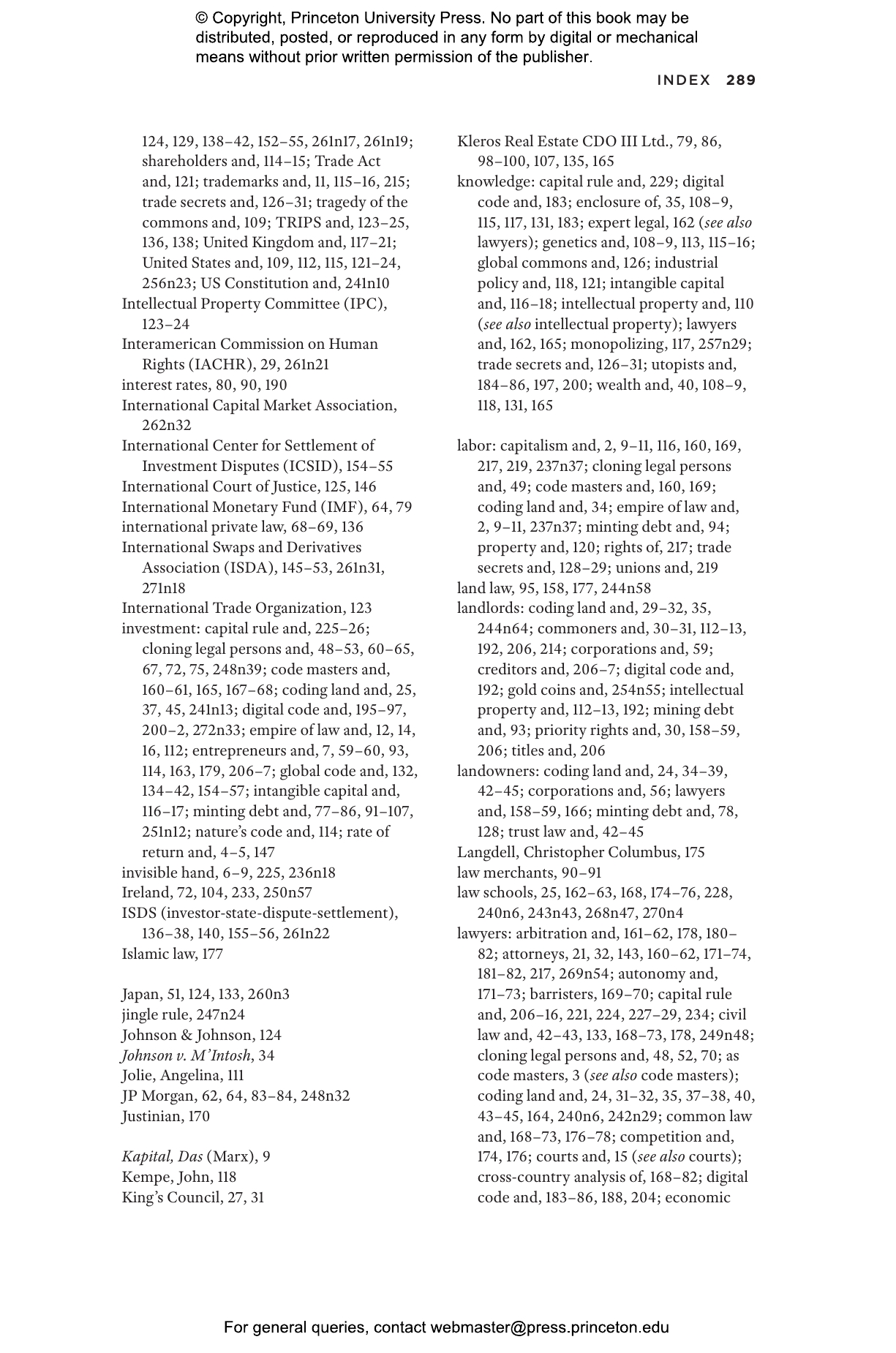

In all cases, according to Pistor, there are several common key attributes of capital, namely: priority, durability, universality, and convertibility.


Finally, Pistor reflects upon future scenarios such as the smart contract and its coding based on blockchain technology. The evolution continued with less tangible assets, such as financial products and intellectual property rights. The book shows the evolution of this coding in the history of capitalism, from the coding of traditional assets, such as land, then later to the coding of corporations. Doing so would also highlight that-as I believe and the author acknowledges-this book renews and extends many insights originally introduced by John Commons’s Legal Foundations of Capitalism (1924) and (only partially) developed by another outstanding scholar fascinated by the works of Commons: Oliver Williamson, especially in his work The Economic Institutions of Capitalism (1985). Because of its focus on the institutions of capitalism, the book could be rechristened ‘The Code of Capitalism’ (rather than of Capital). The ‘code’ refers to the laws of property, contracts, trusts, financial intermediaries, and corporations that are able to transform an asset into capital and thereby generate private wealth in a capitalistic system. According to Pistor, capital is made from two ingredients: an asset (in a very broad sense, including any object, skill, or idea) and the legal code. This new, brilliant and clear (including for non-experts) book by Katharina Pistor is titled 'The Code of Capital' and explores, as the subtitle specifies, 'How the law creates wealth and inequality'.


 0 kommentar(er)
0 kommentar(er)
